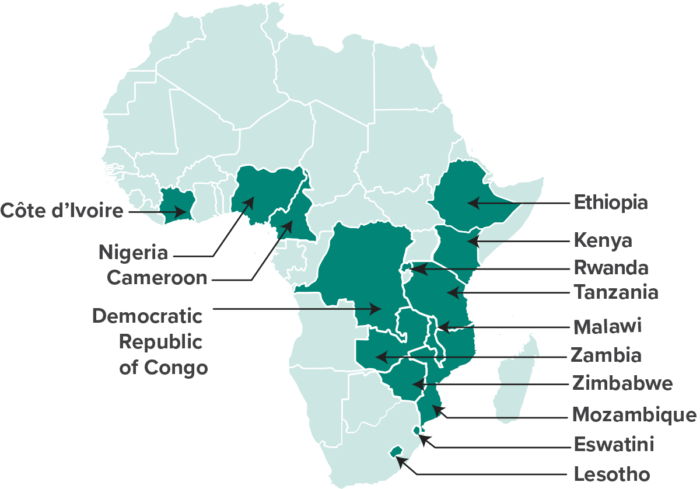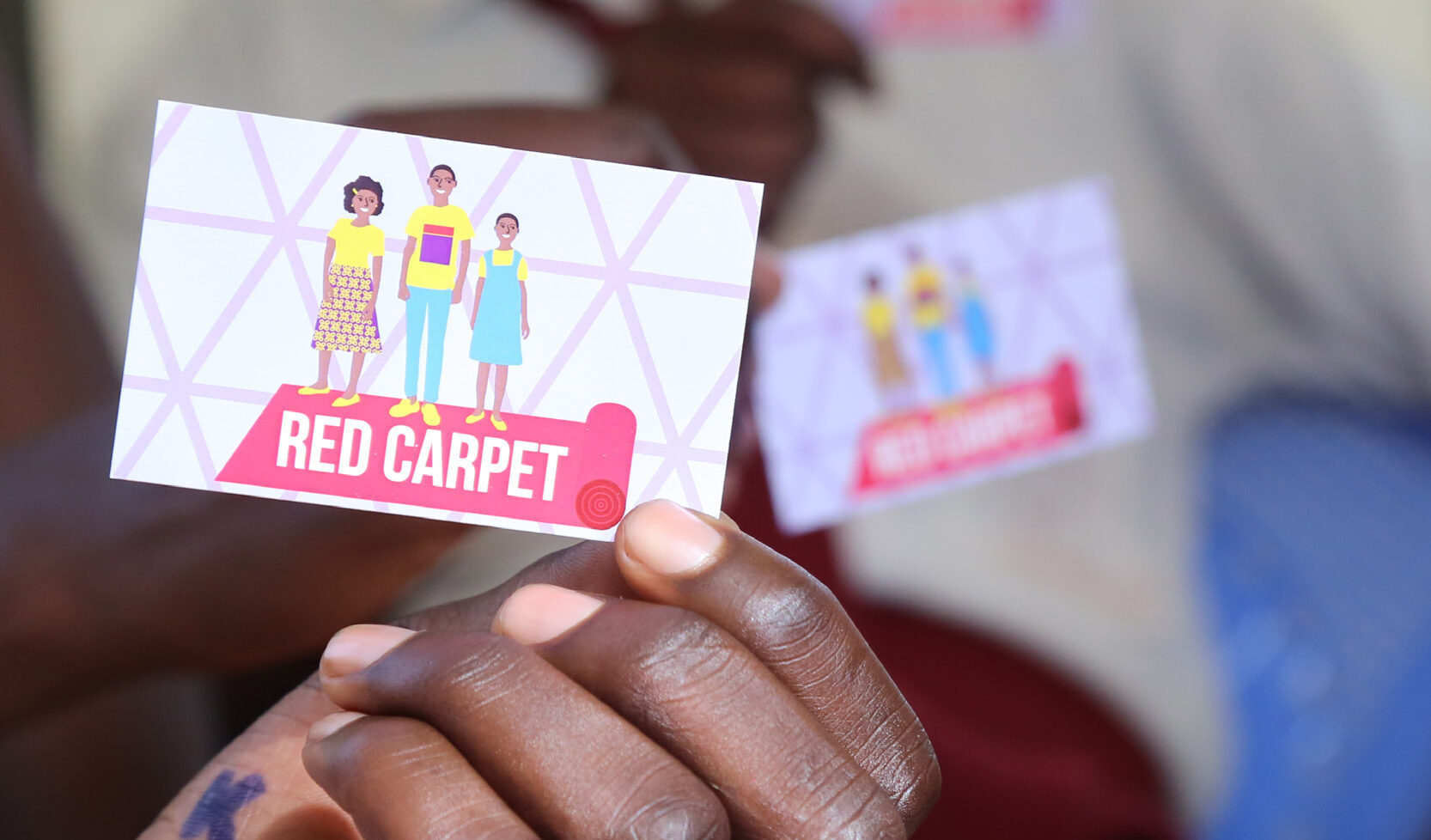
The Elizabeth Glaser Pediatric AIDS Foundation (EGPAF) is working in 14 countries to ensure that adolescents and young adults (ages 10-24) have access to the care they need. Several projects have been instrumental to better address the needs of adolescents and youth populations in supported settings:
Committee of African Youth Advisors
EGPAF developed a Committee of African Youth Advisors (CAYA). This is a group of young individuals representing various country perspectives who lead at a global level to inform health programs that meet the needs and perspectives of young clients and beneficiaries. These youth meet monthly and work alongside EGPAF country staff and global team representatives. To date, CAYA members and focal persons have informed changes and guided tools to better inform disclosure and treatment support for caregivers, clinicians, and communities. They have also transferred their understanding from working at the global level to advocacy at the national level. CAYA has designed their own tools for use in peer groups. Their input has facilitated EGPAF to gain a real-world understanding to better reach young men, learn about messages around sex in support groups, and the experiences of transition to adult care.
Differentiated Service Delivery
In most of our adolescent-supported settings, differentiated approaches to care, wherein HIV testing and treatment services are tailored to the needs of clients (those active and retained on ART requiring less clinical oversight and those failing treatment and needing support) is implemented. Some of these differentiated care strategies have included use of peer mentors to bolster treatment support, adolescent-specific rooms built within existing clinic settings to ensure age-appropriate care, and optimizing clinic times to align with school schedules and clinical status (slow and fast-tracked services).
Capacity-building
Many health care workers report feeling ill-prepared to handle the needs and behaviors of adolescents. EGPAF has scaled up trainings for professional and lay cadres using standardized guidelines, site-level support, and job aids to address the various and specific needs of this population. Trainings have covered diverse areas such as HIV self-testing and use of pre-exposure prophylaxis (PrEP), along with integration of services to address sexual health, reproductive health, gender-based violence, and psychosocial support. EGPAF has expanded community-based capacity for schools with learners living with HIV, to implement DREAMS for pregnant and breastfeeding adolescent girls and young women, and with community leaders to provide home visits for pregnant adolescents.
Peer-led Psychosocial Support Groups
Adolescents are often motivated by their peer relations. Empowering adolescents to support HIV disclosure, treatment adherence, and HIV stigma reduction can have a powerful impact on adolescent HIV care and treatment retention. Across EGPAF-supported sites, various models of psychosocial support are implemented, many using the Ariel Club approach. The club approach complements clinical services, providing a safe space where adolescents living with HIV can talk to trained peers about topics that will help them to achieve and sustain viral suppression to reach their life goals. EGPAF, with CAYA’s support, has standardized a new practice by adding youth created CAYA cartoons in Ariel groups. In Malawi, these dialogue boosts have been beneficial in covering sensitive topics such as disclosure of HIV status to a romantic partner.
Strengthened Support to Adolescent Pregnant Girls
Pregnant adolescents are highly vulnerable to HIV, with poor HIV testing coverage and high rates of HIV-related mortality and mother-to-child transmission of HIV. EGPAF-Kenya’s Jielimishe Uzazi na Afya (JUA) program was an innovative home visiting, case-management intervention that improved health and social outcomes for pregnant adolescents and adolescent mothers and their infants. Through JUA, lay health care workers visited pregnant adolescent girls and adolescent mothers to empower them, and counsel their families, communities and school administrators. JUA adolescents were supported in engaging in health care, maintaining their education and income-generating activities – given free health services and childcare opportunities where needed. Overall, the achievements of JUA demonstrate how important it is to consider a girls’ entire environment—peers, family, school, and community—when supporting her through her pregnancy, delivery, and motherhood.
Key Results
-
In the past year, EGPAF has provided nearly 1.8 million adolescents and youth access to HIV testing and counseling and currently supports nearly 179,000 adolescents and youth with the treatment they need to stay healthy
-
Over 500 EGPAF-supported psychosocial support groups continue to address the needs of children and adolescent affected by and infected with HIV to date, with updated tools and resources that enable conversations around safe sex and normalizing HIV infection.
-
Eleven countries are now represented within CAYA, which has to date, published a guide for health care workers to support adolescent HIV disclosure in various contexts, generated ideas to strengthen differentiated care, and collaborated on a cartoon discussion guide that explores adolescent HIV issues. All assets have been absorbed by country teams and are being used.
-
Under JUA, almost all (94%) adolescents delivered their babies with a skilled birth attendant (Kenyan average: 61%), and a large uptick in family planning (from 39% to 64%) and school reentry (n=72) was seen. Compared to the national average of 24% for viral suppression among adolescents, beneficiaries of the JUA program achieved 94% suppression.
-
EGPAF-Tanzania initiated Victory Clubs under the Children’s Investment Fund Foundation (CIFF) ACT Adolescent project. The clubs evolved into the Timiza Ndoto initiative (achieving dreams), where results show overall suppression rates increased at all TN sites in particular among adolescents 10-14 and 15-19 year old boys. adolescents had statistically higher rates of secondary viral suppression after TN (68%) compared to the standard of care sites (51%) and almost half the rate of suggested treatment failure (14%) compared to stands of care (29%). There are 27 active Victory Clubs now.
-
EGPAF-Cameroon, through U.S. Centers for Disease Control and Prevention/Project DELTA, has supported six sites to provide post-violence care to 235 survivors of sexual and gender-based violence. The project managed to ensure 73% of eligible survivors were given post-exposure HIV prophylaxis medication to reduce their risk of HIV infection.
Call to action
Empowering girls and boys to engage in sexual and reproductive health education is still very much needed. In many of the contexts in which we work, gender inequality hands young women a steep price to pay. We also need to scale-up acceptability and use of PrEP, to ensure better prevention of HIV in this high-risk group. Further, engaging men and creating greater demand around voluntary medical male circumcision will enable a healthier environment for youth populations. Finally, HIV treatment providers, in-line with ministries of health, have to ensure reduced age of consent to test for HIV and that the most effective treatment options are available for use in adolescents within clinic settings. Investing in these opportunities will bring us to global elimination targets.





